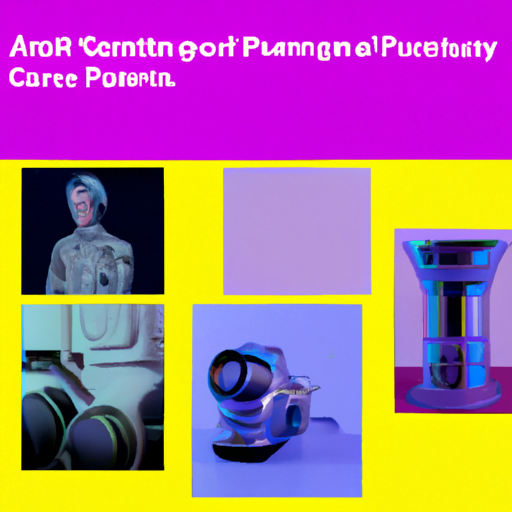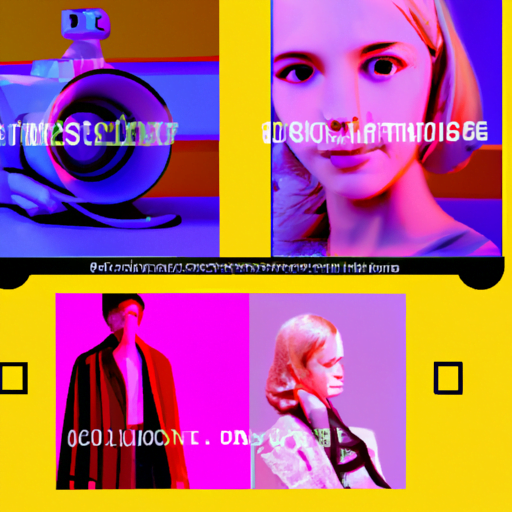
-
Table of Contents
Future-Proofing Design Careers in an AI-Driven World

In today’s rapidly evolving technological landscape, artificial intelligence (AI) is transforming industries and reshaping the way we work. Design, as a field, is no exception. As AI becomes more prevalent, designers must adapt and future-proof their careers to stay relevant and thrive in an AI-driven world. This article explores the impact of AI on design careers and provides valuable insights on how designers can navigate this new landscape.
The Rise of AI in Design
Artificial intelligence has made significant advancements in recent years, enabling machines to perform tasks that were once exclusive to humans. In the design field, AI is being used to automate repetitive tasks, generate design variations, and even create entirely new designs. This technology has the potential to streamline workflows, increase productivity, and unlock new creative possibilities.
One example of AI in design is the use of generative design algorithms. These algorithms can analyze vast amounts of data and generate multiple design options based on predefined parameters. This not only saves time but also allows designers to explore a wider range of possibilities and make more informed decisions.
Another area where AI is making an impact is in user experience (UX) design. AI-powered chatbots and virtual assistants are becoming increasingly common, providing users with personalized and interactive experiences. Designers need to understand how to design for AI-driven interactions and ensure that the user experience remains seamless and intuitive.
The Role of Designers in an AI-Driven World
While AI has the potential to automate certain design tasks, it does not replace the role of designers. Instead, it augments their capabilities and allows them to focus on higher-level strategic thinking and creativity. Designers will play a crucial role in shaping AI systems, ensuring ethical considerations, and maintaining a human-centered approach.
Designers will need to develop new skills and adapt to the changing landscape. Here are some key areas where designers can focus to future-proof their careers:
- Data Literacy: Designers should develop a strong understanding of data and analytics. AI relies on data to make informed decisions, and designers who can effectively interpret and leverage data will have a competitive advantage.
- Collaboration: As AI becomes more integrated into design workflows, designers will need to collaborate with AI systems and algorithms. This requires designers to have a basic understanding of AI technologies and the ability to work alongside AI systems.
- Human-Centered Design: Designers must continue to prioritize the needs and experiences of users. AI should be used to enhance the user experience, not replace it. Designers need to ensure that AI-driven solutions are inclusive, accessible, and empathetic.
- Continuous Learning: The field of AI is constantly evolving, and designers need to stay updated with the latest advancements. Continuous learning and upskilling will be essential to remain competitive in the job market.
Case Studies: AI and Design
Several companies have already embraced AI in their design processes, showcasing the potential of this technology. Let’s explore a few case studies:
1. Airbnb
Airbnb, the popular online marketplace for vacation rentals, uses AI to improve its user experience. The company developed an AI-powered search ranking system that personalizes search results based on user preferences and behavior. This allows users to find relevant listings more efficiently and enhances their overall experience on the platform.
2. Adobe Sensei
Adobe, a leading software company, has integrated AI into its creative tools through Adobe Sensei. Sensei uses AI and machine learning to automate repetitive tasks, such as image editing and content creation. This frees up designers’ time, allowing them to focus on more strategic and creative aspects of their work.
3. IBM Watson Design Language
IBM has developed the Watson Design Language, a set of design principles and guidelines that leverage AI to create more accessible and inclusive designs. The language provides designers with tools and resources to design AI-driven solutions that are transparent, explainable, and trustworthy.
The Ethical Considerations of AI in Design
As AI becomes more prevalent in design, ethical considerations become paramount. Designers must ensure that AI-driven solutions are fair, unbiased, and respect user privacy. Here are some ethical considerations for designers working with AI:
- Bias Mitigation: AI systems can inadvertently perpetuate biases present in the data they are trained on. Designers need to be aware of these biases and take steps to mitigate them, ensuring that AI-driven solutions are fair and inclusive.
- Transparency: AI systems should be transparent, and users should have a clear understanding of how their data is being used. Designers should strive to create interfaces that explain the role of AI and provide users with control over their data.
- Privacy and Security: Designers must prioritize user privacy and ensure that AI systems handle personal data securely. This includes implementing robust security measures and obtaining user consent for data collection and usage.
Summary
As AI continues to reshape the design industry, designers must adapt and future-proof their careers. AI has the potential to automate certain design tasks, allowing designers to focus on higher-level strategic thinking and creativity. However, designers will need to develop new skills, such as data literacy and collaboration with AI systems. Human-centered design and continuous learning will also be crucial in an AI-driven world.
Case studies from companies like Airbnb, Adobe, and IBM demonstrate the successful integration of AI into design processes. These examples highlight the potential of AI to enhance user experiences and streamline workflows.
However, ethical considerations must be at the forefront of AI-driven design. Designers must ensure that AI-driven solutions are fair, transparent, and respect user privacy. Bias mitigation, transparency, and privacy and security are key ethical considerations for designers working with AI.
By embracing AI, developing new skills, and prioritizing ethical considerations, designers can future-proof their careers and thrive in an AI-driven world.
